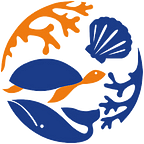Rodolfo Reyes Jr: The morphology guy
Rodolfo Reyes Jr., aka Rudy, joined FishBase in 1993 after working on a series of projects related to coral reef fisheries at the Marine Science Institute of his Alma Mater, the University of the Philippines.
Although he was hired at FishBase to work on morphology data, Rudy’s very first task was completely unexpected. He was asked to “break” a computer program.
“I was assigned to test Mapper, at that time, the mapping software developed in-house for FishBase. I was supposed to test it under different sensible data and settings combinations and find out what would break it and where it would break. And that is what I did, break it — to help improve the software,” he said with a smile.
But the data-intense projects didn’t take long to arrive. As soon as he was done with Mapper, Rudy started inputting morphology information onto FishBase. This, in turn, happened to be useful for the research he would be conducting for his master’s studies in natural resources management.
“I thought of a fish identification tool that would use morphometrics and pictures. Back then FishBase was — and still is — the single largest collection of fish pictures,” he said. “At some point, I was also taking measurements on hundreds of fish photos to compile morphometric data. It was a tedious task but somebody had to do it. That dataset is now used for two things: to calculate length-length relationships and as filters in a species identification tool in FishBase.”
More recently, his fish identification skills have gone high-tech, working with the baited remote underwater videos that were incorporated this year into the set of tools offered on FishBase. “It is very much like doing underwater visual census using SCUBA, except that one doesn’t get wet doing it and there is no SCUBA gear to rinse afterwards,” Rudy said jokingly.
Thinking about the most rewarding task he has had at FishBase, Rudy did not hesitate to bring up his work on life-history data. Initially linked to a specific project, the job evolved from having to provide data points to now collaborating in multidisciplinary analyses that use life-history data. That ‘adventure’ into fish life-history analyses led him to become an authority on the topic, who now reviews manuscripts for international journals. Rudy is also now a member of the editorial board of the Journal of Applied Ichthyology and a subject editor for Acta Ichyologica et Piscatoria.
His own professional growth has been intrinsically linked to that of FishBase and, therefore, he can only hope for a bright future for this biodiversity information system.
“The FishBase database now holds a vast amount of data on a good number of aspects of fish biology across virtually all groups. We are now seeing these data being used in modelling to answer a wide variety of research curiosities — from whether fishes living in deeper waters really have larger eyes, to finding out which fishes would probably be more resilient and which ones are more at risk of extinction or reduced range under a changing climate regime.”
I see FishBase, bringing to the table the data it holds, being more and more involved in multidisciplinary research. I will be there as that happens,” Rudy said.
